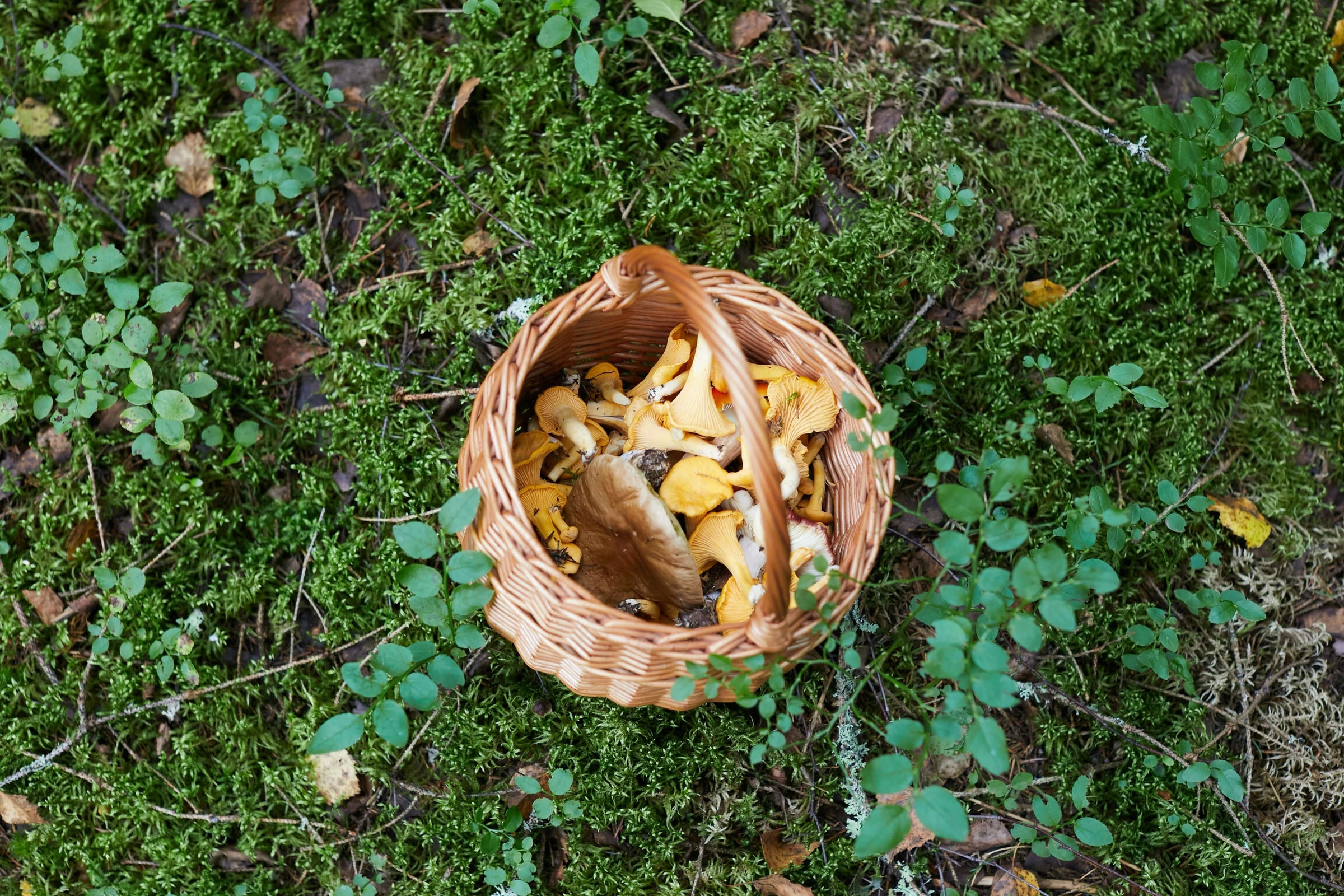Wild Mushrooms
Autumn mushrooms are emerging in the woods now and it's time to celebrate the fungus among us. Farmers markets across the country often have a local grower offering a variety of cultivated exotic mushrooms for sale. If you have one nearby, you can also buy mushrooms at Whole Foods or other upscale grocery stores. Most supermarkets across the country retail an ever-increasing selection of varieties, a market expected to grow by 9.4% in the next 6 years.
Today, the lowly ‘shroom is a hot topic. Scores of mushroom teas are available for those who want to kickstart their day with a blast of phytonutrients rather than a caffeine charge. Mushrooms are used as meat substitutes and have health benefits that include the ability to fight cancer and Alzheimer’s disease and to help lower blood pressure. Vitamin D, Vitamin B6, and selenium make them powerful immunity boosters, an excellent first line of defense these trending post-Covid days. Researchers are developing new uses for mushrooms that include building materials, textiles, pharmaceuticals, cleaning products, biofuels, packaging, and, at Cornell, integrating mushroom mycelia into a biohybrid robot.
Mushrooms are not true plants. They belong to a biological category called Fungi, which includes molds and yeasts. They have no chlorophyll which plants use to create food from the sun through a process called photosynthesis, so they need to harvest energy for themselves in other ways. Some mushrooms, such as boletes, chanterelles, and morels, have a symbiotic relationship with living trees where both organisms benefit. The mushrooms gather minerals from the soil through their mycelium (root system) made of hyphae (a cottony network of very fine fibers) and share it through the trees’ root systems. The trees share their sugars as they absorb the minerals. This type of exchange is very difficult to replicate which explains why morels are very difficult to farm. They like to be wild and even in the wild have very specific requirements in terms of moisture and temperature.
Most mushrooms, including some of the world’s most popular varieties, live off the decaying remains of dead plants, which is why the life cycle of a healthy forest, with fallen trees and rotting logs, is so important. These types of mushrooms are relatively easy to cultivate because you can provide an artificial habitat with piles of compost and manure. The Chinese were raising shiitake mushrooms on oak logs in the 13th century and in the 17th century the French figured out how to cultivate the common white mushroom, Agaricus bisporus, in quarry tunnels near Paris and created an industry. No small feat! Of the estimated 1,000 edible mushroom species, only a few dozen have been successfully cultivated.
For the adventurous, mushroom hunting is a very rewarding activity—if you find them. And if you know what to look for and what to avoid. Mushrooms can be toxic and even fatal if you choose the wrong one. Always go mushroom foraging with an expert and pay close attention. Try to learn just one variety a season, it is much better to be safe than sorry.
Children who are accustomed to hunting for mushrooms with their families are eager and able partners in all the climbing and stooping required. An early appreciation of the delicacy of some foraged mushrooms that can’t be purchased can lead to a lifetime of woodland appreciation and pursuit.
When cooking mushrooms that are purchased from a grower, there is no need to wash them. They are grown on a sterilized substrate and cutting off the fibrous part at the base is enough to prepare them for cooking. The stems of some mushrooms are also tough and best removed and saved for stock. If you gather mushrooms in the woods, it is fine to give them a quick rinse, after all, they get rained on and survive. Mushrooms are 80-90% water which causes them to greatly reduce in size when they are cooked. White mushrooms contain 2.2 grams of protein per one cup serving as well as vitamin B 12 and intensify the flavor of a dish because they are high in glutamic acid, which contributes to their umami factor.
The woodsy aroma of fresh mushrooms is due to octenal, an 8-carbon alcohol, which is generated from the gill tissue. This is why mushrooms with unopened caps are less flavorful than mushrooms with distinctive gills. Brown mushrooms have more flavor than white ones from the grocery store but the cremini mushroom, sometimes labeled “Baby Bella,” is widely available these days and a very good stand-in if your mushroom foraging did not pay off.
One of the best things about mushrooms is how well they pair with egg noodles. The noodles are a perfect foil for sauteed mushrooms, with or without the addition of another protein such as steak or chicken.
Here’s a recipe from Eating Well for Creamy Chicken and Mushrooms that is perfect for topping Grandma’s Egg Noodles! And here is an excellent Eating Well article about how to clean mushrooms. And finally, here is a Mushroom Ragout over Wide Egg Noodle recipe from Grandma's kitchen.
For more information about mushrooms, check out The Mushroom Council’s guide to purchasing here.
For information on mushroom foraging groups in your region, do a search on FaceBook for local clubs. Talk to the mushroom growers at the farmers’ markets and ask them for information. But don’t try it on your own; it’s just too risky.
A portion of this article appeared recently in the Centre Daily Times, State College, PA.

